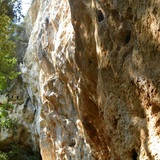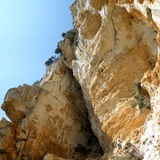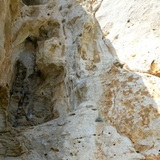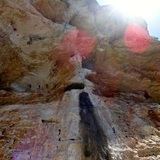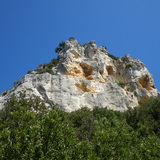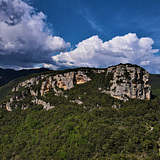☀️sun during the morning: Settore Ghiro, Settore Futura, Settore Sud-Est
sun all day: Settore Sud.
sun during the afternoon: Zona Rossa, Settore Ovest.
👪family friendly: YES: Rocca di Corno Ghiro, Futura,
NO: Rocca di Corno- Sudest, Sud, Zona Rossa, Ovest.
📆best period:4-11 for Settore Futura, Settore Ghiro, 10-5 for Settore Sud, Settore Sud-Est, Settore Ovest
🇬🇧
⛰️Rocca di Corno offers an excellent rock face, kissed by the sun and protected, making it an ideal place for winter climbing. It overlooks the picturesque Valle Ponci and to reach the starting point of the streets, you have to follow the ancient Via Romana Julia Augusta. Along this route, after the parking lot, you will find the suggestive Ponte delle Fate, an enchanting place.
These crags offer lines on vertical walls, dihedrals, cracks with athletic and technical passages, on drops and holes.
Levels vary from easy to medium.
🇮🇹
⛰️La Rocca di Corno offre un'ottima parete rocciosa, baciata dal sole e protetta, rendendola un luogo ideale per l'arrampicata invernale. Si affaccia sulla pittoresca Valle Ponci e per raggiungere il punto di partenza delle vie, devi seguire l'antica Via Romana Julia Augusta. Lungo questo percorso, dopo il parcheggio, troverai il suggestivo Ponte delle Fate, un luogo incantevole.
Queste falesie offrono tiri su muri verticali, diedri, fessure con passaggi atletici e tecnici, su gocce e buchi.
I livelli variano da facile a medio.
🇩🇪
⛰️Rocca di Corno bietet eine hervorragende, von der Sonne geküsste und geschützte Felswand, die es zu einem idealen Ort zum Winterklettern macht. Es überblickt das malerische Valle Ponci und um zum Ausgangspunkt der Straßen zu gelangen, muss man der antiken Via Romana Julia Augusta folgen. Entlang dieser Route finden Sie nach dem Parkplatz die eindrucksvolle Ponte delle Fate, einen bezaubernden Ort.
Diese Felsen bieten Schläge an senkrechten Wänden, Verschneidungen, Rissen mit sportlichen und technischen Passagen, an Abhängen und Löchern.
Die Schwierigkeitsgrade reichen von leicht bis mittel.
🇬🇧
The famous Giorgio Delfino was one of the main bolters of these cliffs, such as the Ghiro sector for example; equipped between 1999 and 2005, which was very successful due to the good bolting and the beauty of the lines.
This sector was so called precisely because the nailer met a dormouse halfway through one of those days.
Even the Futura sector was almost totally bolted by him in 1999.
The South East sector is a historic sector of classic routes which was bolted in 1972, has mixed bolting and it may happen that you have to protect yourself on improvised anchors.
At the moment the routes rebolted with resin are Carla and Angela.
In the southern sector, on the other hand, we find lines that made the history of the early years of the Finale area such as Ipsilon, Titomantio or il Topo.
Zona Rossa is a wonderful winter sector, equipped between 2001 and 2002.
Over time, Rocca di Corno has been the playground of some legends, such as Wolfgang Gullich, where he impressed his passage by freeing "Silvester". If you want to touch history with your hands, you know where to go.
🇮🇹
Il Famoso Giorgio Delfino è stato uno dei principali chiodatori di queste falesie, come ad esempio il settore Ghiro; attrezzato tra il 1999 e il 2005, che ha avuto molto successo per la buona chiodatura e la bellezza delle linee.
Questo settore è stato così chiamato proprio perchè il chiodatore ha appunto incontrato un ghiro a metà via durante una di quelle giornate.
Anche il settore Futura è stato quasi totalmente chiodato da lui nel 1999.
Il settore Sud Est è un settore storico di vie classiche che è stato chiodato nel 1972, presenta chiodature miste e può capitare di doversi proteggere su ancoraggi improvvisati.
Al momento le vie richiodate con resina sono Carla e Angela.
Nel settore Sud troviamo invece linee che hanno fatto la storia dei primi anni del finalese come Ipsilon, Titomantio o il Topo.
Zona Rossa è un settore stupendo, invernale, attrezzato tra il 2001 e il 2002.
Rocca di Corno è stata nel tempo campo di gioco di alcune leggende, come Wolfgang Gullich, dove impresse il suo passaggio liberando "Silvester". Se volete toccare la storia con le vostre mani, sapete dove andare.
